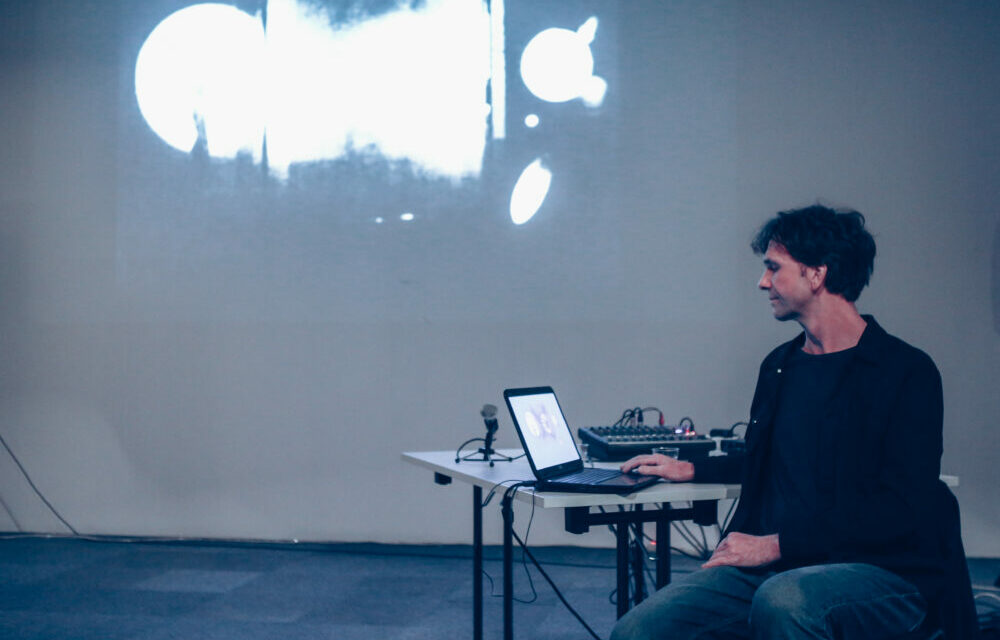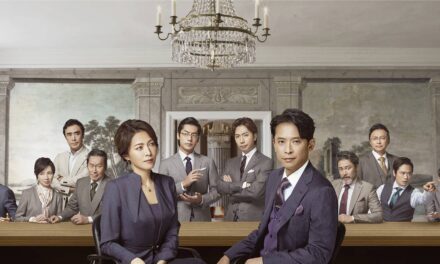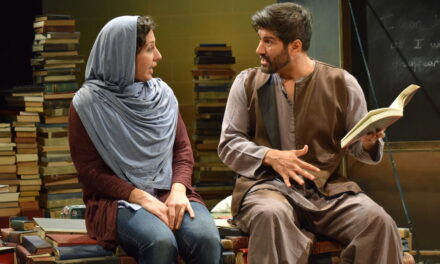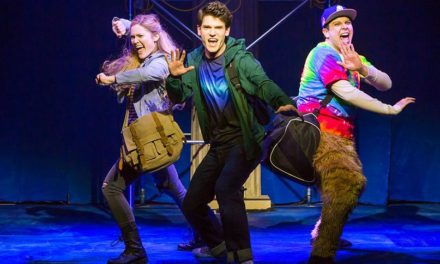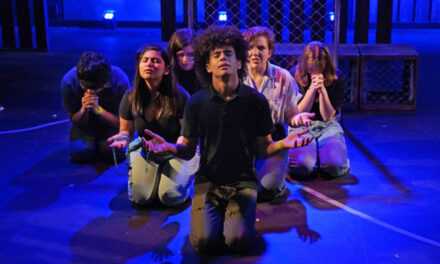Jan Pappelbaum is one of the most inventive and internationally renowned set designers, from the Schaubühne in Berlin, Germany. He is a permanent collaborator of the theatre director Thomas Ostermeier. Together they created the very inventive staging of masterpieces like Hamlet, Richard III, A Doll’s House, and Hedda Gabler (2006). Jan Pappelbaum was a guest mentor of the creative workshop for contemporary theatre set design in Skopje, and he held a workshop at the Museum of Contemporary Art Skopje (12–14 April 2019), a collaboration supported by the Goethe Institute Skopje.
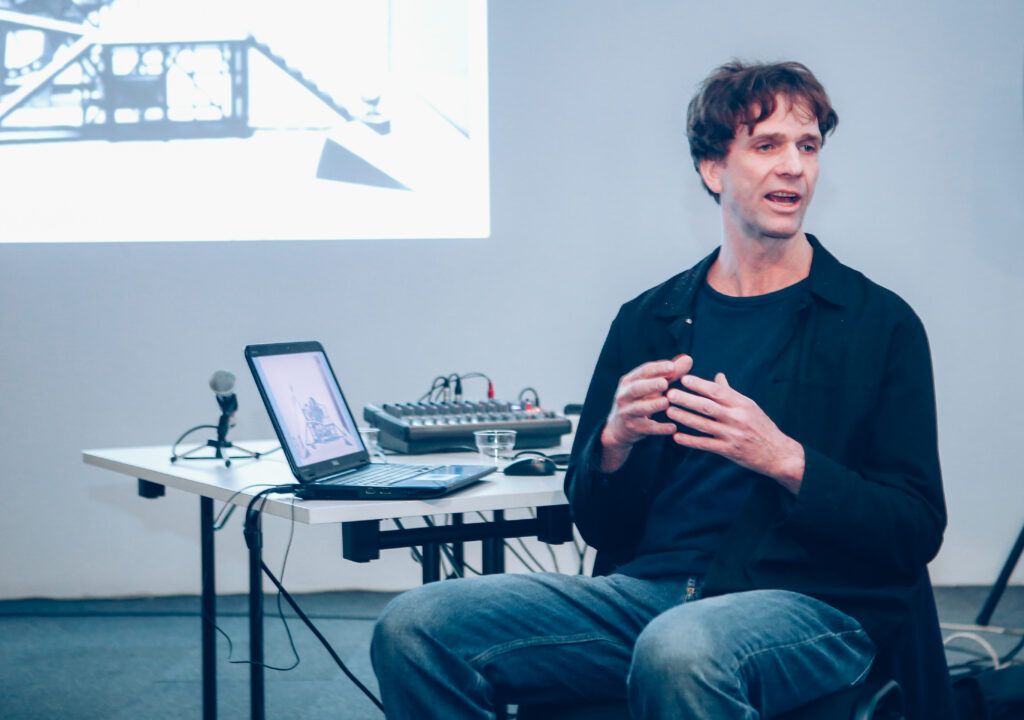
Jan Pappelbaum. Photo credit Natasha Geleva (Leni).
Ivanka Apostolova Baskar: Why were the lecture and workshop in Skopje titled “The Modern on Stage / The Dream of the House”? What were your expectations and your concepts for achieving creative results, and of what kind, in the manner of modern readings and space transformations in this educational context and workshop process?
Jan Pappelbaum: This was my first time in Skopje. In addition to my very abundant work as a stage designer for specific individual productions and my position as a permanent equipment manager of the Berlin Schaubühne, I like to give lectures and work in workshops, most recently last summer in Hong Kong. They help me to think and evaluate completed work and to fantasize about the future. I cannot answer all requests for lectures or workshops. The fact that I came to Skopje was for the most part because of curiosity, a production-free time and a long-term and cordial invitation.
IAB: Based on the plays recommended by you for reading, preparation, and analysis, the participants, by choosing two of three proposed plays, were separated into two groups – the Ibsen group (The Wild Duck) and the Brecht group (The Caucasian Chalk Circle) – and nobody chose Shakespeare (Measure for Measure). What kind of intuitive conclusion did you draw based on their choice of plays, ideas, and final presentations?
JP: The selection of the pieces I proposed by Shakespeare, Ibsen and Brecht was based on my own experience with them and on the conviction that these pieces need different stages for the relationship between the viewer and the staged theatrical performance. The lack of enthusiasm for Shakespeare’s Measure for Measure, though that’s a great piece, I attribute to a possibly poor translation into the Macedonian language. The results of the stage designs for Ibsen and Brecht were great, precisely because they were so consistently different. Immediately the transference was to the present; that was part of the task. For Brecht’s The Caucasian Chalk Circle, the workshop participants left the workroom and walked with me through the city, where we searched for places and spaces that could be used for a theatrical performance or that can be transmitted as a spatial motif in an existing theatre space; for example, we found rooms in the train station, markets, schools or the old post office building. It was important for the Brecht-room to have the same reality or time level of play and watching, as if the players could also be spectators or the spectators also become the players. It was quite different with Ibsen’s Wild Duck. The plot is like a dream or a nightmare of the present, based on possession, envy and mistrust. We could not visit these private worlds in Skopje (which is not that easy in other cities); we had to research and invent a new, sophisticated architecture for the stage, which at the same time elegantly solves the problems of aesthetics and conversions. I think that part was very well done.
IAB: Workshop students and participants were amazed by you. Your lecture is one of the most important events in 2019 in my country; we in Macedonia have a rare opportunity to have a guest artist and mentor of your caliber who is so dedicated and approachable for all the active participants who are hungry for total innovation in the theatre (we have pretty mediocre contemporary theatre, so we have a lot of artistic work to do and develop further).
JP: Unfortunately, I did not have enough time in Skopje to see contemporary theatre live. The audience for my lecture and the workshop participants I got to know very well and found interesting; the discussion with them was great fun, and I answered my own questions.
IAB: I have noticed, Jan, that you are very natural and calm in the way you recognize the potential narrative scenes and spaces from everyday life and anthropology, that serves right to your ideas for theatre scenographies afterward. How have you experienced Skopje as a city with its own architectural layers, Skopje as an urban space, Skopje as a potential for drama and theatre?
JP: I did not know Skopje and was very curious. Before, I had only read about history and the various cultural and religious groups. I met Skopje as a quiet and, above all, clean city. In the five days of my stay, it was just before the ballot in parliament, and I have seen some demonstrations with too many national flags. I do not think that’s necessary. The differences between the different nationalities in my native Germany are much bigger and more unjust and do not cause similar reactions. The buildings directly in the city center are aesthetically completely uninteresting because it is only a decorative architecture. But outside the city center, for example, I saw interesting buildings from the futuristic modernism of the second half of the last century, which were great for their open spaces and free constructions. Such buildings have unfortunately disappeared in my East German home in the last two decades. This architecture with its open structure inspires me again and again for basic buildings on stage. I was very interested in models for spaces and moods, for new future stages such as the markets, which are rare in such a human density, or the main station, which is thought big but is very reduced and thus has an unknown mood; it tells a lot of history and expectations.
IAB: When you talk about your long-term collaboration and work at the Schaubühne when you say and show us that the set design is a work of art in the theatre, please share more expressions about your method of designing and building the scenography, your stage minimalism, your holistic methodology as co-creator in theatre.
JP: The most important thing in a theatre evening is the performance as a whole, the staging as a total work of art, in which the stage design, the stage space is only a subservient part, especially as a partner for the actor who must be onstage every evening, and through the stage one can get another dimension. A stage is good if it is as simple as possible. It must not define the images and processes beforehand; it simply has to tell time and place. But above all, it should leave room for imagination for playing and changing. If you have a theatrical performance that is unique every day, the same staging may be different the next day, and you want to see that again, then it’s great. In the beginning, the set design must arouse this playfulness for the actor through a simple foundation, and then at the end be able to bring the results to a simple point.
IAB: You have long been the set design partner of Thomas Ostermeier (theatre director). Tell us more about what kind of team chemistry you experience in your mutual theatrical work and artistic exchange: how do you see all the phases of your collaboration from this present point of view and perspective and time distance?
JP: We share the interest described in the last point in the dominant focus of staging, the dominance of the actors, the serving function of the stage in his support. That’s why Thomas was looking for an architect, not a visual artist, as a working partner for the stage. From our many collaborations and experiences, we take great strength at the beginning of every new production.
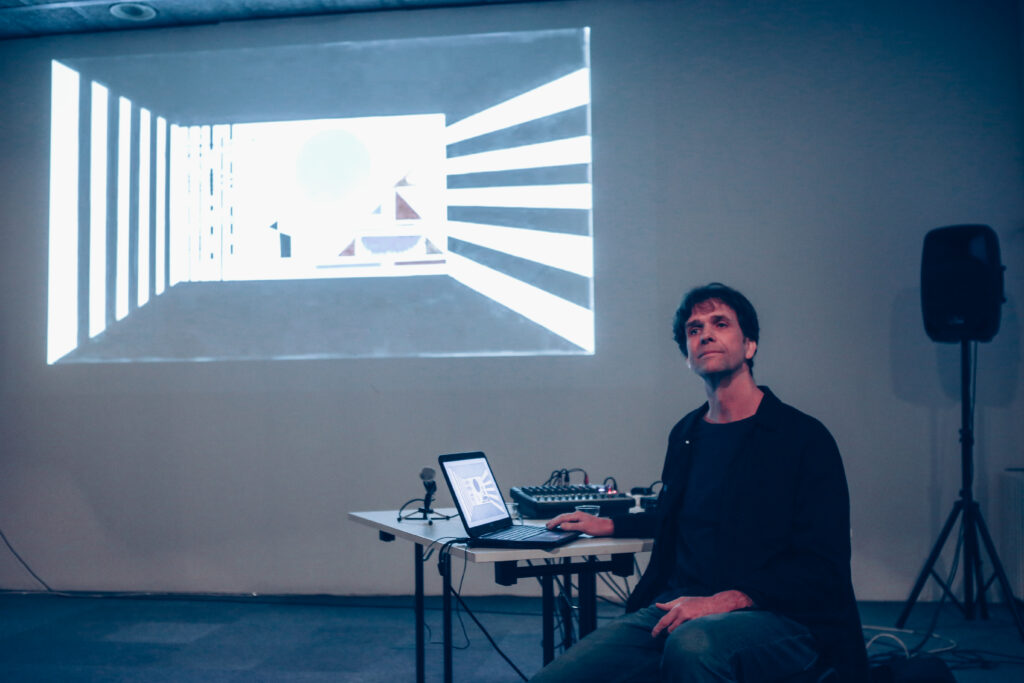
Jan Pappelbaum. Photo credit Natasha Geleva (Leni).
IAB: Reading about and watching your achievements in the contemporary German and European theatre as a set designer, how do you experience the period from the ’90s to the 2000s to the 2010s in your theatre work – as evolution, revolution, changes, and exchanges?
JP: The ’90s were socially and artistically a time in which the questions were asked about the way forward; during this time we began after our studies our theatre work, and there were many new texts, many of which we staged and used for the performance of different places, a great job for me as a theatre-enthusiastic architect. In the 2000s we had first the experiences and could use these to modernize classical theatre texts. And in this unique theatre, the Schaubühne in Berlin, we still use this development today.
IAB: What makes the Schaubühne one of the most relevant theatres in Germany today, and what makes Berlin one of the most relevant cities in Europe today, for artistic and creative works and jobs? What kind of theatre system do you have at the Schaubühne, and is the spirit of the city all about in Berlin?
JP: Berlin is not a beautiful city, but it is one of the most interesting cities for theatre. There are only five speech theatres and three opera houses. This makes possible for each theatre its own strong character. Of course, the Schaubühne lives because of the unique strength of the actors and directors gathered there. And because of the strong focus not only on the German-speaking but above all the European, the international theatre. This is possible thanks to our many guest performances abroad and through our own F.I.N.D. Festival (International New Drama Festival), which takes place annually and presents international highlights. Many European directors stage as guests at the Schaubühne.
IAB: Jan, do you believe that the theatre video art, blue and green screens with live streaming, 3D video, and animation mapping will totally replace the physical set design in theatre and opera in the near future, or not?
JP: But of course not! A good stage is no decoration, no background. A good stage is an active partner for the actor every night and lives heavily on his material used to build, that adds a different story to the overall work of art. The search for real, usable materials for the theatre in the contemporary urban space was also part of our tour and discussion at the workshop.
IAB: When we talk about the effect of the plays on you as set designer and reader, what do you prefer to stage: classics, modern classics or contemporary authors-playwrights?
JP: As a theatregoer, I am more interested in the new theatrical texts of contemporary authors, because of course, I am interested in the current positions and discussions. As a theatre-maker, as an employee, as a stage designer, I prefer to work on the modernization of the classics. They are more complex as a task, and modernization is more difficult. The quality of timelessness is a special task for the design and selection of the building material with its own history. A modernized classic should not be allowed to play in the present alone; it must become more exciting from its present history.
IAB: Let us return to your education in architecture and the impact of the Bauhaus school and design on you (Walter Gropius and Ludwig Mies van der Rohe’s architecture). How is the essence of their philosophy about the space and place reflected in your sensibility in modern set design? Do you manage to transpose the spirit of their architecture into your scenographic path?
JP: A good stage should be present not as an additional decoration, but only as a means of concentration, helping to determine the place and time and mood, an aid to their change and all as unobtrusive and obvious as possible. I got to know these thoughts during my architectural education at the Weimar Bauhaus University; their application made me strong in the theatre. Above all, the character of the workshop, the transfer of the spirit and structure of a medieval manufactory in the modern-day life in the development and production of theatre production as a Gesamtkunstwerk, is taken from the Bauhaus. I enjoy this character of the work every day in our theatre Schaubühne in Berlin with the large group of specialized staff from the workshop to the stage, who are in constant exchange and want one thing: every day a great, unique theatre evening.
This post was written by the author in their personal capacity.The opinions expressed in this article are the author’s own and do not reflect the view of The Theatre Times, their staff or collaborators.
This post was written by Ivanka Apostolova Baskar.
The views expressed here belong to the author and do not necessarily reflect our views and opinions.

